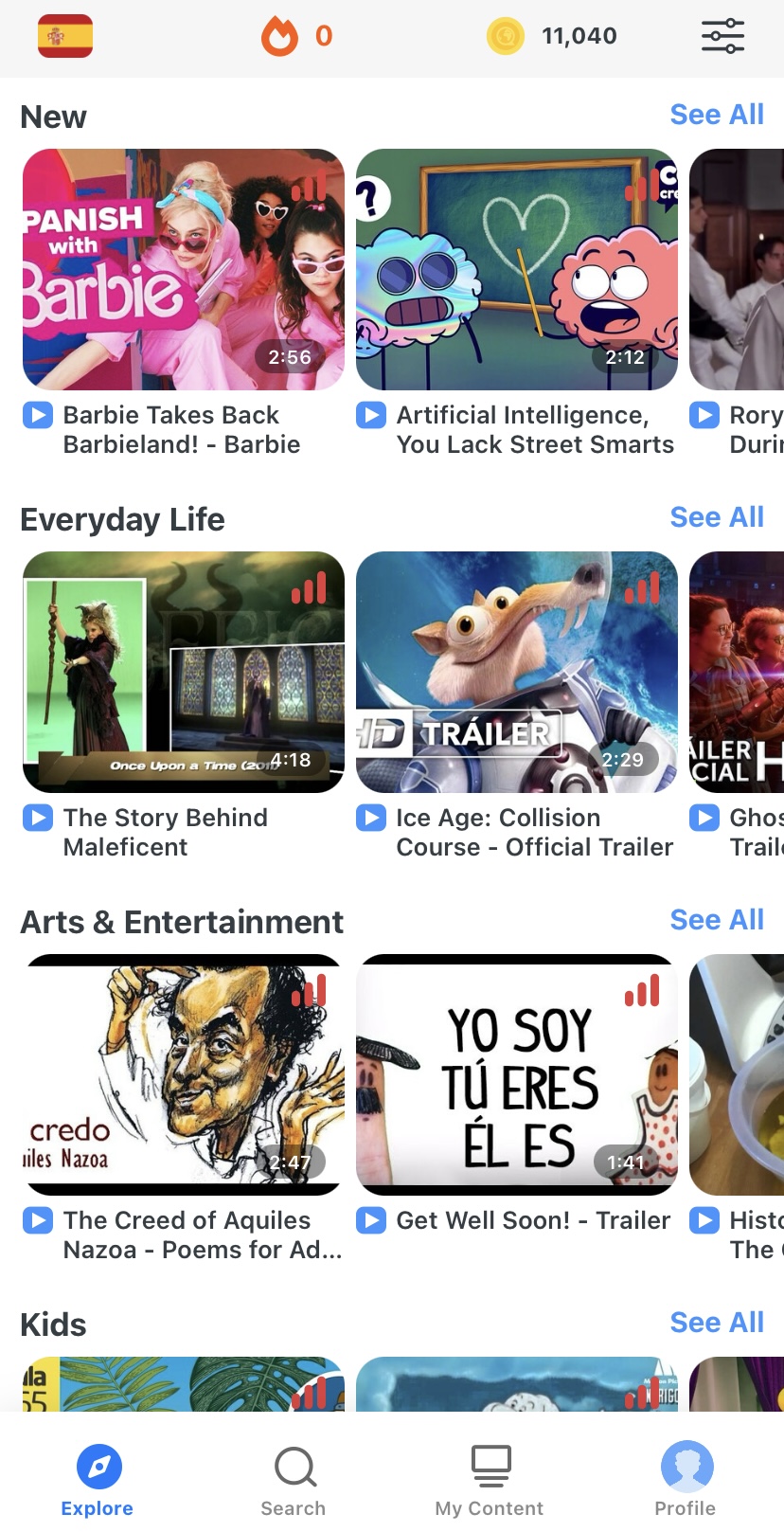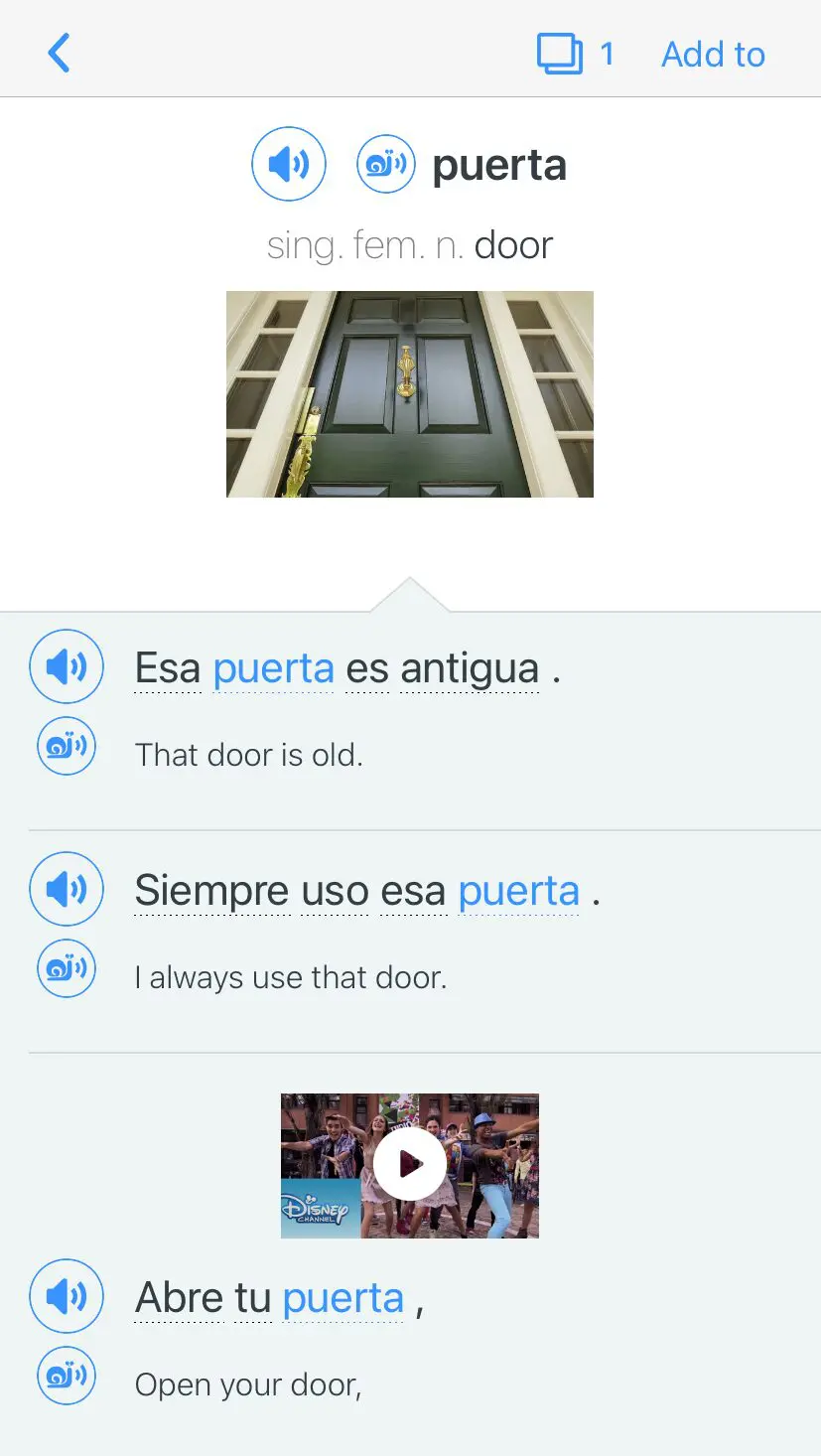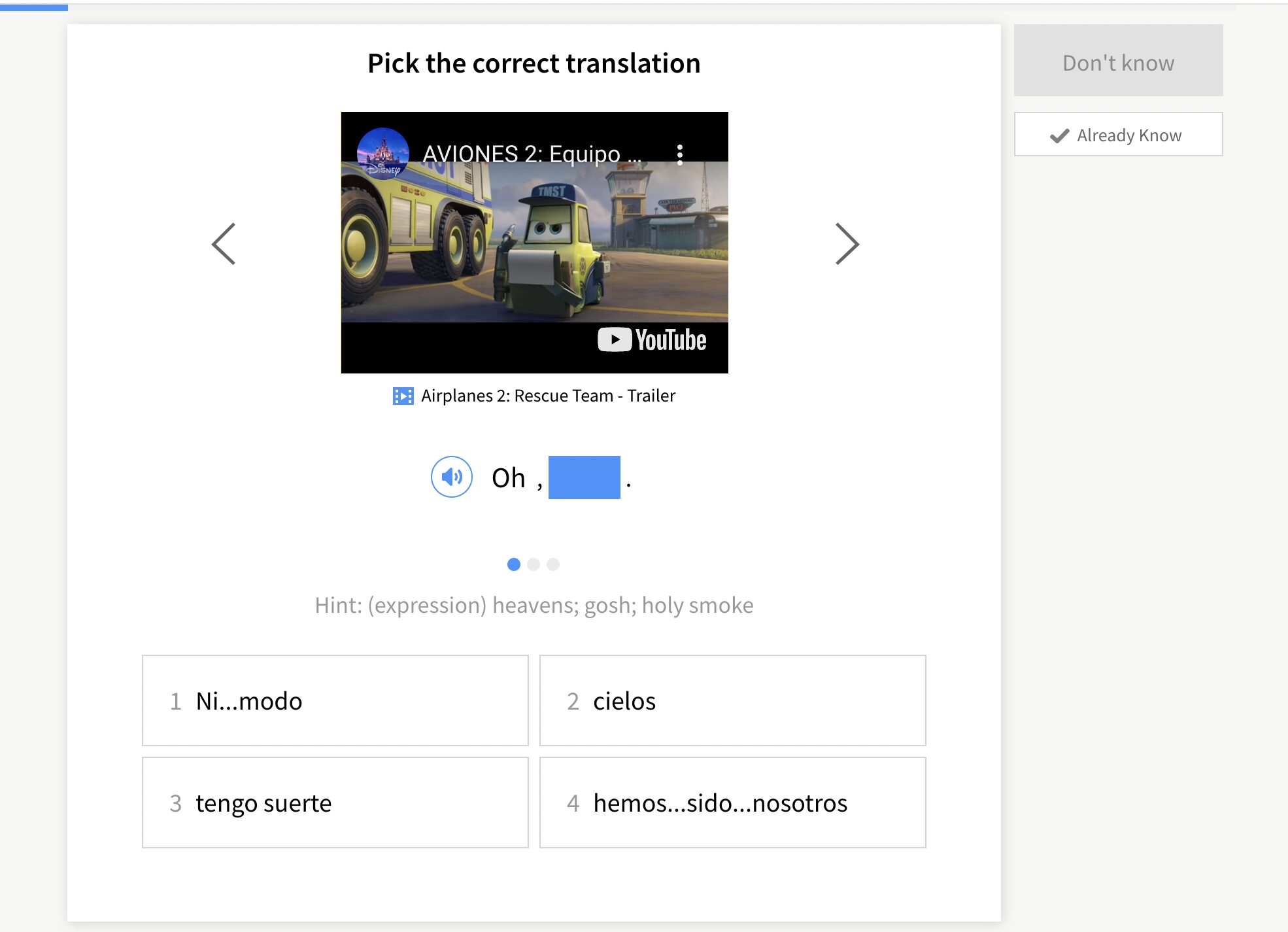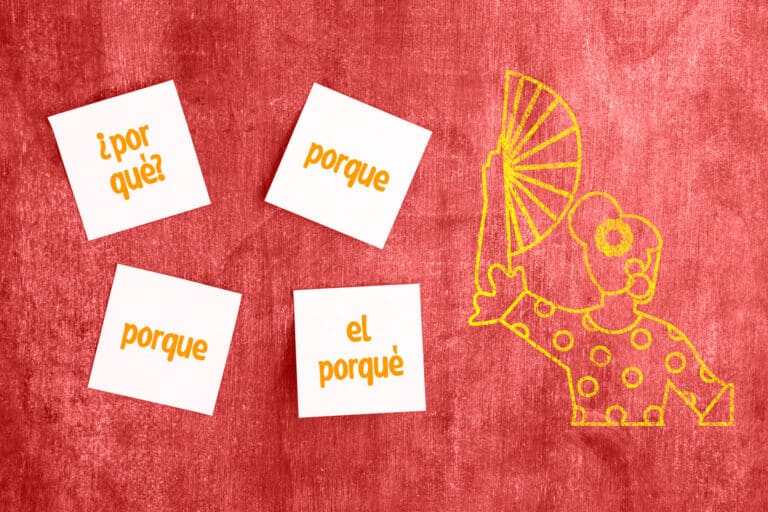Contents
- 1. Set Realistic Goals
- 2. Keep Good Notes
- 3. Read and Write in Spanish
- 4. Listen to Music in Spanish
- 5. Incorporate Spanish Into Your Daily Life
- 6. Practice Spanish With Native Speakers
- 7. Don’t Take Grammar Too Seriously
- 8. Learn Synonyms of Spanish Words You Already Know
- 9. Volunteer Among Spanish Speakers
- 10. Travel (or Move!) to Spain or Latin America
- And One More Thing…
10 Tips to Significantly Improve Your Spanish

If you’re looking for ways to improve your Spanish, you’re in the right place—regardless of your current skill level, I’ve got the tips you need to get you on the right track to Spanish fluency.
Can 10 simple tips really help you improve your Spanish that much? Yes, and if you stick with them daily and be consistent with your learning, you’ll soon be on your way to fluency.
Download: This blog post is available as a convenient and portable PDF that you can take anywhere. Click here to get a copy. (Download)
1. Set Realistic Goals
The trick to keeping yourself motivated is to set achievable targets for your learning progress.
The best goals are specific and short-term. This might be something like “learn vocabulary for fruits” or “practice the conditional tense” every two weeks, every month, whatever works for you.
Recording yourself speaking is a really good way to track your progress. Listening to yourself in Spanish will help you notice any mistakes that you’ll be able to correct.
2. Keep Good Notes
The key to remembering vocabulary is to record it in a way that’s useful to you.
Even if you’re good at memorizing new vocabulary, it’s still a good idea to keep an organized written record for future reference. It’s also a great way to keep track of your progress.
Make a vocabulary diary, color-code your vocabulary or even make sets of flashcards. There are so many options.
The most important thing is that you find the way that works best for you. Here are some additional note-taking tips to get you started.
3. Read and Write in Spanish
There are many options to help you start reading in Spanish. There are Spanish reading apps for the beginner on the go. Or, how about short stories or magazines in Spanish?
If your Spanish is more advanced, you could start with some Latin American or Spanish novels.
Meanwhile, any notes you make can be written in Spanish, such as your daily planner, grocery lists, recipes, reminders and anything else you put to paper (or digital device) during your daily life.
4. Listen to Music in Spanish
If you love listening to music, you might already have some Spanish singers in your playlist. Next, try adding some songs in Spanish.
You could even print the lyrics or write them down and translate the song. Alternatively, you could pick out new vocabulary that you want to learn.
Learning the lyrics to Spanish songs and then singing along is a great way to improve your fluency. It’ll do wonders for your vocabulary, pronunciation and speed in Spanish.
5. Incorporate Spanish Into Your Daily Life
There are so many simple and fun ways to incorporate Spanish into your daily life.
If you enjoy watching movies, TV series or Netflix, try to watch them in Spanish.
You can either add Spanish subtitles to a movie you’re watching in English or even try watching the dubbed version in Spanish for an immersive experience. Tons of popular TV shows—like “Friends” and “The Big Bang Theory”—have Spanish dubs, so they’re not hard to find.
Finding content that’s relevant to you—but also appropriate for your level—is key here. For example, for Cristiano Ronaldo fans out there, I highly recommend videos like this one below. It’s an interview of Ronaldo and his part in “Soy Georgina.”
Finding a high-quality video resource with accurate subtitles can go a long way. The language learning program FluentU is one such example, with a library of native Spanish language videos that come with expert-written, dual-language subtitles.
FluentU takes authentic videos—like music videos, movie trailers, news and inspiring talks—and turns them into personalized language learning lessons.
You can try FluentU for free for 2 weeks. Check out the website or download the iOS app or Android app.
Click here to take advantage of our current sale! (Expires at the end of this month.)

6. Practice Spanish With Native Speakers
Practicing with native speakers is the best way to improve your Spanish!
For those who don’t live in a Spanish-speaking country, seek out Spanish speakers. Try using websites such as ConversationExchange and Facebook to connect with people in your local area. You could even host an exchange student from a Spanish-speaking country.
Language exchanges are a fantastic way to socialize and improve not only your level of Spanish, but also your confidence when speaking it.
You can also use online resources and apps for language exchanges, such as Tandem and HelloTalk.
7. Don’t Take Grammar Too Seriously
In most situations, speaking confidently and with good pronunciation will matter far more than whether or not you used the correct gender form of an adjective or if you mixed up the imperative and the subjunctive.
Find comfortable, low-stress situations where you can practice without worrying about grammar.
Prioritizing speed and fluency will help you get over the self-consciousness and doubts that impede many language learners. Your Spanish accent will improve—as will your confidence.
8. Learn Synonyms of Spanish Words You Already Know
The practical language you need to communicate may be a bit different from what you’ve learned from books or language classes. Be sure to study groups of synonyms for every situation.
Learn about the specific dialect you plan to use. This is particularly useful if you’re planning to travel to a particular country, since each country will have their own dialects and varieties of Spanish.
Learn some slang, common phrases and expressions of that area. This is easy to achieve by talking to native speakers.
You can also use WordReference to find synonyms for the common words and phrases you already know.
9. Volunteer Among Spanish Speakers
Volunteering in a Spanish-speaking country among native Spanish speakers will greatly improve your language abilities. In exchange for a few hours of work during the week, volunteers are provided with accommodation, food and learning opportunities.
If you are interested in volunteering but you are not able to travel to a Spanish-speaking country, don’t worry, there are so many opportunities to volunteer in your local community and improve your Spanish at the same time!
One of the best websites to find volunteering activities around the globe is Workaway.
10. Travel (or Move!) to Spain or Latin America
The best way to learn Spanish is to immerse yourself in the language.
But what is the best way to do this?
Travel to a country where everyone speaks Spanish! Not only will you get to speak in Spanish, but you’ll be reading, listening and even writing in Spanish nonstop. There’s nothing like going abroad and immersing yourself in the language to accelerate your language learning.
Why not immerse yourself completely by staying with a local family, joining an immersion program or swapping all-inclusive hotels for Airbnb?
With any of these tips, you’ll be able to take your Spanish to the next level!
Try them all to find out which one works best for you and have fun while improving your Spanish!
¡Buena suerte! (Good luck!)
Download: This blog post is available as a convenient and portable PDF that you can take anywhere. Click here to get a copy. (Download)
And One More Thing…
If you’re like me and prefer learning Spanish on your own time, from the comfort of your smart device, I’ve got something you’ll love.
With FluentU’s Chrome Extension, you can turn any YouTube or Netflix video with subtitles into an interactive language lesson. That means you can learn from real-world content, just as native speakers actually use it.
You can even import your favorite YouTube videos into your FluentU account. If you’re not sure where to start, check out our curated library of videos that are handpicked for beginners and intermediate learners, as you can see here:
FluentU brings native Spanish videos within reach. With interactive captions, you can tap on any word to see an image, definition, pronunciation, and useful examples.
You can even see other videos where the word is used in a different context. For example, if I tap on the word "puerta," this is what pops up:
Want to make sure you really remember what you've learned? We’ve got you covered. Practice and reinforce the vocab from each video with learn mode. Swipe to see more examples of the word you’re learning, and play mini-games with our dynamic flashcards.
The best part? FluentU tracks everything you’re learning and uses that to create a personalized experience just for you. You’ll get extra practice with tricky words and even be reminded when it’s time to review—so nothing slips through the cracks.
Start using the FluentU website on your computer or tablet or, better yet, download our app from the App Store or Google Play.
Click here to take advantage of our current sale! (Expires at the end of this month.)











